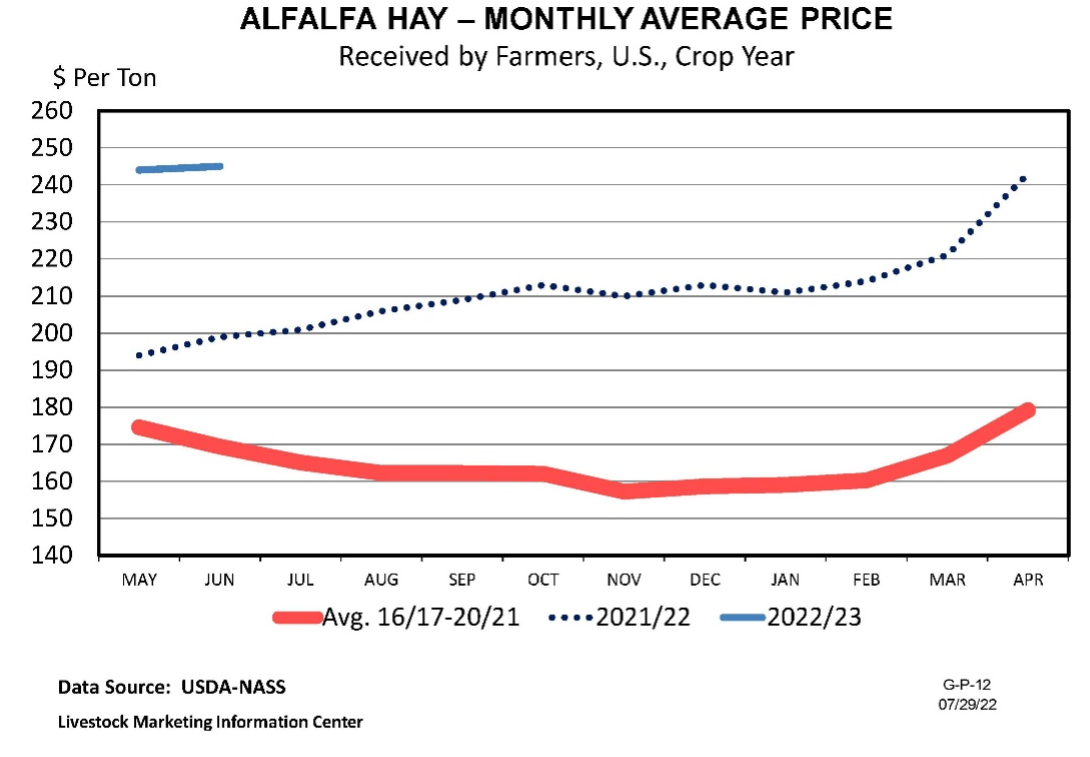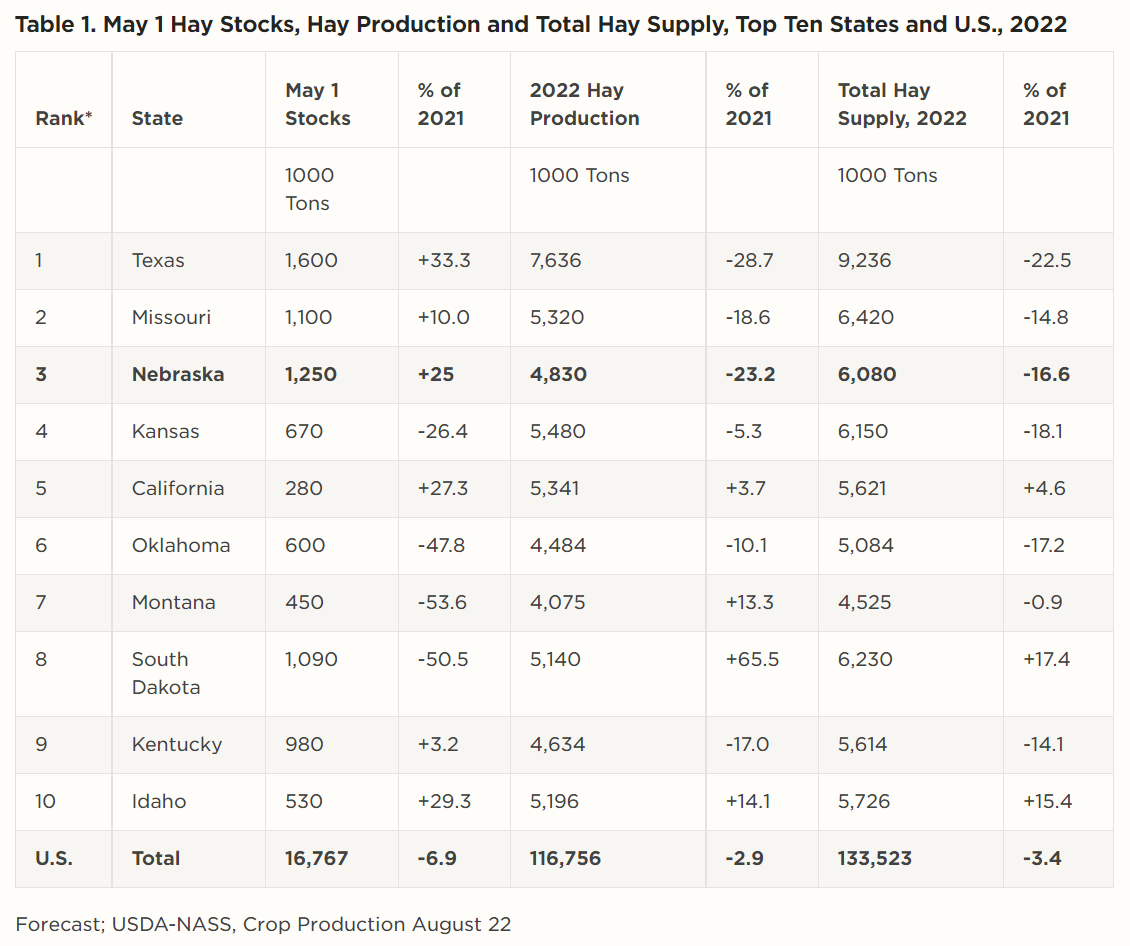Plan Now to Purchase Your Hay Supplies

Hay production has been reported to be 50% of average or less in many areas of Nebraska. The U.S. hay supply is at a 50-year low (Table 1). Couple this information with rising costs (Figure 1) and it becomes prudent to plan fall, winter, and next spring’s hay needs sooner rather than later.
Inventory your feed and hay resources now to know what you need. Checking prices and availability now will go a long way to reducing the anxiety of what we will feed our cows this fall and winter.

Finding Hay Prices and/or Hay to Buy
The Nebraska Direct Hay Report offers the most current Nebraska hay prices reported by region. In addition, hay prices from surrounding states can be found at the USDA Market News Hay Reports. The Nebraska Department of Agriculture Hay and Forage Hotline offers a free listing for both buyers and sellers.
Be sure to check local and regional resources, such as newspaper and trade magazine ads. Additional resources may be found by searching online and social media.
Tips for Pricing Hay and Assessing Bale Quality
The greatest expense cattle producers face each year is feed costs. With that in mind, we do need to be aware of a few principles in purchasing hay. These would include: 1) determining whether you are paying on a per ton or per bale basis, 2) knowing the hay quality you are purchasing to spend your feeding dollars more effectively, 3) buy bales that are tightly rolled, dense, and have square shoulders that don’t sag, 4) net wrap helps bales shed water, and 5) bales should be free of mold, weed seeds and dangerous levels of nitrates (depending on the forage species).
The class of animals (heifers vs. cows, dry vs. lactating, thin vs. fat condition, etc.) that will consume the hay will determine the quality of hay needed to be purchased. If possible, buy hay that will best match those requirements. However, quality of hay can be supplemented with additional protein and energy sources to meet those requirements if higher quality hay is hard to source.
Use a lab analysis to determine hay quality. Core sample 15-20 bales from each lot and send the samples to a lab for testing. Tests can cost around $18 for Near Infrared Spectroscopy (NIRS) to $28.50 for wet chemistry. These tests calculate moisture content, crude protein (CP), relative feed Value (RFV), relative forage quality (RFQ), and additional information including mineral content and nitrate levels. More information can be found at the BeefWatch article, “Test, Don’t Guess - sampling and testing hay” or the Nebraska Extension publication, Sampling Feeds for Analyses.
Storing and Feeding Hay
Livestock producers should locate hay bale yards in a well-drained area out in the open with easy access in the winter for feeding. Rows should line up north to south, at least 3 ft apart, so sunlight will reach a greater portion of the bale. This will help evaporate moisture from the bales and the ground around them quickly. The Beefwatch article, “Keep it Tight; Store Hay Right” offers more tips on storing hay.
If possible, weigh bales with a scale to get accurate weights when planning your winter feeding. If you are feeding hay that may contain noxious/invasive weeds or non-native forage species, feed this hay in a limited area, so if a problem does develop, it can be kept isolated and, hopefully, controlled.
Now is the time to get your feed needs ready for winter. Purchase hay now and/or plan feeding alternatives for cows this winter and spring before grass growth.








